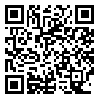Volume 5, Issue 10 (2-2015)
Res Anim Prod 2015, 5(10): 166-178 |
Back to browse issues page
Download citation:
BibTeX | RIS | EndNote | Medlars | ProCite | Reference Manager | RefWorks
Send citation to:



BibTeX | RIS | EndNote | Medlars | ProCite | Reference Manager | RefWorks
Send citation to:
Gholizadeh M, Rahimi Mianji G, Nejati Javaremi A. (2015). Linkage Disequilibrium Estimation and Haplotype Based Genome-Wide Association to Detect QTLs Affecting Twinning Rate in Baluchi Sheep. Res Anim Prod. 5(10), 166-178.
URL: http://rap.sanru.ac.ir/article-1-446-en.html
URL: http://rap.sanru.ac.ir/article-1-446-en.html
1- Sari Agricultural Sciences and Natural Resources University
2- University of Tehran
2- University of Tehran
Abstract: (6485 Views)
Twinning trait is an important trait in sheep breeding. Reproductive traits differ greatly across sheep breeds, but also between sheep in a single flock. Identification of ewes with higher twinning rate and more raised lambs per year is an important parameter for breeding and farming success. A genome-wide haplotype association study, using 42,416 Single Nucleotide Polymorphisms (SNPs) was conducted to identify genomic regions affecting twinning rate in Baluchi sheep. We also studied LD patterns in this population. Blood samples from a total of 96 sheep from two herds and data on their twinning rate during the first four parities were collected. Animals were genotyped using the IlluminaOvineSNP50K BeadChip assay. Genetic stratification and herd effect were included as confounding effects and fitted into the statistical analyses. Haplotype based GWAS for twinning was performed with the first MDS component and herd effect as covariates. To control the Association with twinning rate was tested using the software PLINK. Suggestive associations were identified for SNP on chromosomes 1, 10 and 15. LD was evaluated by measuring r2 between all pairs of loci. For SNPs up to 10 kb apart, the average r2 was 0.33, for SNPs separated by 200–500 kb the average r2 was 0.086. The extent of LD in Baluchi sheep extends over much more limited distances than reported in dairy cattle and seems to be similar to other ovine populations. Further studying of these regions in validation studies will help the identification of candidate genes for twinning rate in sheep.
| Rights and permissions | |
 |
This work is licensed under a Creative Commons Attribution-NonCommercial 4.0 International License. |


